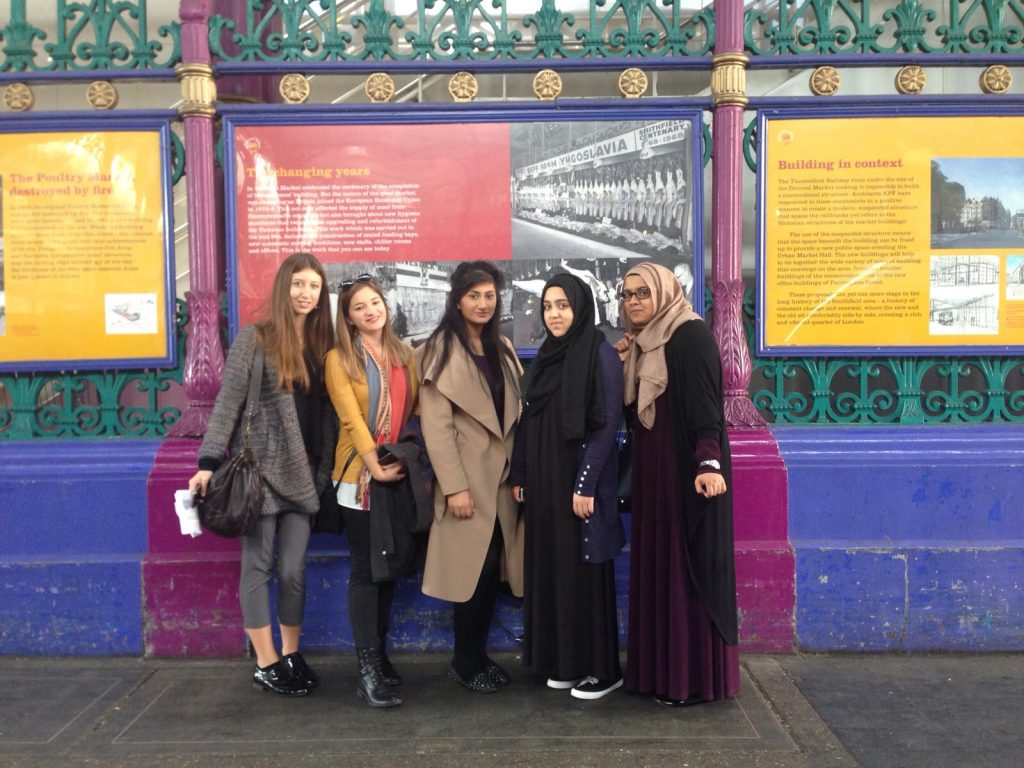Exploring the law: throwback to bloody Islington
All of our first year law undergrads took part in an exercise in week one of their LLB where they escaped City and went to visit a number of buildings of significance in the local area, before tackling some research questions.
They were then asked to write a blog post inspired by their travels. 21 winners were selected from all those posts submitted – this is one of those – thanks to Justine Lecoq.
What do you think of our actual penal system in the UK? What a thought-provoking question! Whether you are familiar with law or not you must have followed the Rehabilitation vs Retribution debate which has agitated the United Kingdom over the past few years. For those who haven’t (promise me to keep in touch with the news from this time on!) the main issues were: prisons conditions, social rehabilitation and prisoners’ rights. It cannot be denied that our penal system is not perfect and obviously needs to be reformed, but what most people tend to forget is that we have come a long way. Don’t run away, I’m not going to build a complete chronology of the penal system in the UK since the 13th century! The point here is only to give you a sample of it through a quick expedition around Islington.
Smithfield Market’s murky past
Located in the heart of Islington, Smithfield Market -the largest wholesale meat market in the UK- is a key place in the history of punishments. Well, at first sight when you enter this colourful building you may ask yourself (and for good reason) “Am I in the right place?” “What is the link with law and punishment?”. Actually, this pleasant place (apart from the smell of the meat) was for over four centuries one of London’s main sites of execution for criminals, can you believe it?
 For the record, back in 1305 the Scottish hero William Wallace was executed here. Indeed, found guilty of treason, murder, robbery and ‘various other felonies’ he was taken from Westminster Hall, stripped and dragged naked by a horse to the place of his execution. There he was hanged till near death on a very high gallows.
For the record, back in 1305 the Scottish hero William Wallace was executed here. Indeed, found guilty of treason, murder, robbery and ‘various other felonies’ he was taken from Westminster Hall, stripped and dragged naked by a horse to the place of his execution. There he was hanged till near death on a very high gallows.
An expectant crowd looked on as he was cut down while still alive and then mutilated, disembowelled (so his intestines could be removed whilst he was still conscious), and emasculated (1).
And to top it all, his heart, liver, lungs and other internal organs were thrown into fire and burned while his head was cut from his body! I sincerely hope you’re not reading this blog post during your lunch break!
The harsh Old Sessions House
On the west side of Clerkenwell Green lies Old Sessions House. This beautiful Georgian building is in fact a gruesome piece of Islington’s history. Indeed, Midllesex Sessions House (as it was originally known as) was – in the late 1700s- the largest and busiest courthouse in England and had also a reputation for being one of the harshest in the country. To give you an idea a 78-year-old woman once received seven years for stealing a joint of meat and a 20-year sentence was not unknown for stealing a pair of boots (2). Moreover the cells were tiny (approximately the size of a linen cupboard) and it was common for prisoners to die from starvation or gaol fever.
However, the main purpose of prisons was not to punish offenders, but to house defendant awaiting trial and convicts awaiting punishment. As for these punishments, they were severe not to say barbaric: convicts were whipped (even for the offence of simple larceny!), tortured in many different ways and hanged. The rationale for inflicting such severe punishment was deterrence, but in fact the effectiveness of public execution as a deterrent was small and the crowds were simply treating the spectacle as entertainment (3)
The sentences mentioned above are only a few examples of a long and gruesome list. If most of these grisly punishments which were given publicly until 1868 quickly fell out of use thereafter, we must bear in mind that hanging was still common until 1964! It makes your blood run cold, doesn’t it? Officially the death penalty was abolished in the UK in 1969 (4), and the harshest sentence is now life imprisonment. Whether it is effective or not is another matter… I let you meditate upon it!
(1) David Brandon and Alan Brooke, London the Executioner’s City (Sutton 2006).
(2) Theclerkenwellpost.com, ‘In Session – Clerkenwell Post‘ (2015)
(3) John Hostettler, A History Of Criminal Justice In England And Wales (Waterside Press 2009)
(4) Jason Rodrigues, Death penalty in the UK suspended 50 years ago (Guardian, 9 November 2015)

